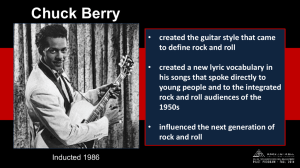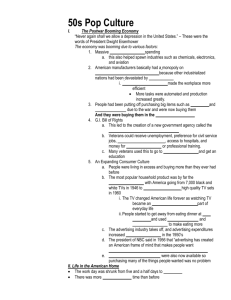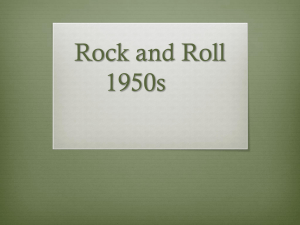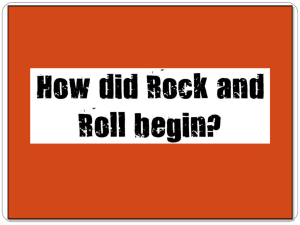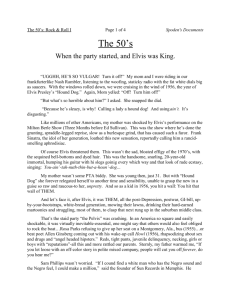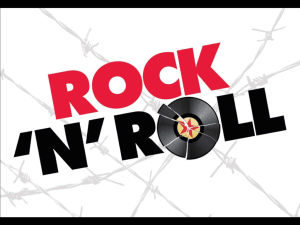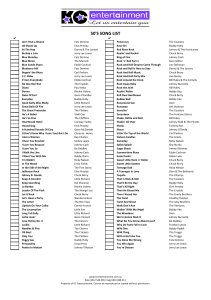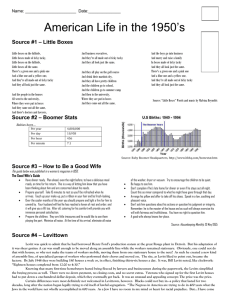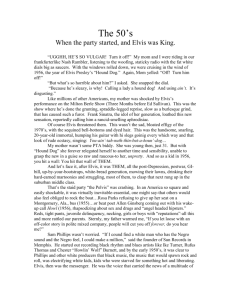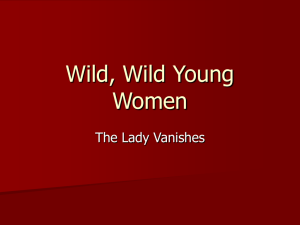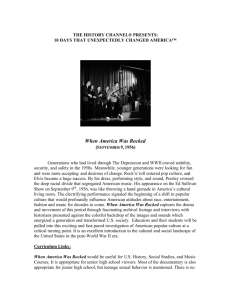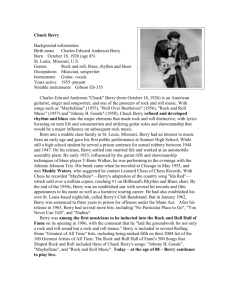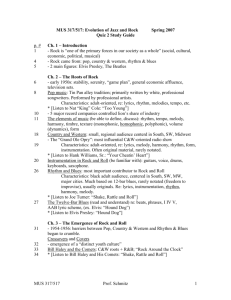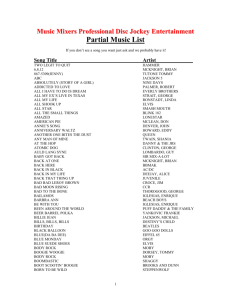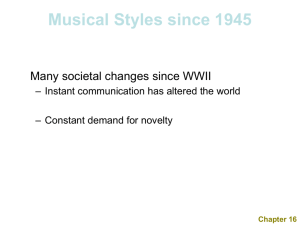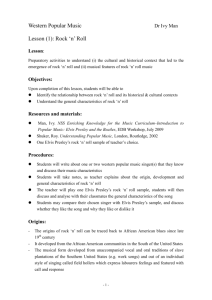History of Rock and Roll Scope and Sequence
advertisement
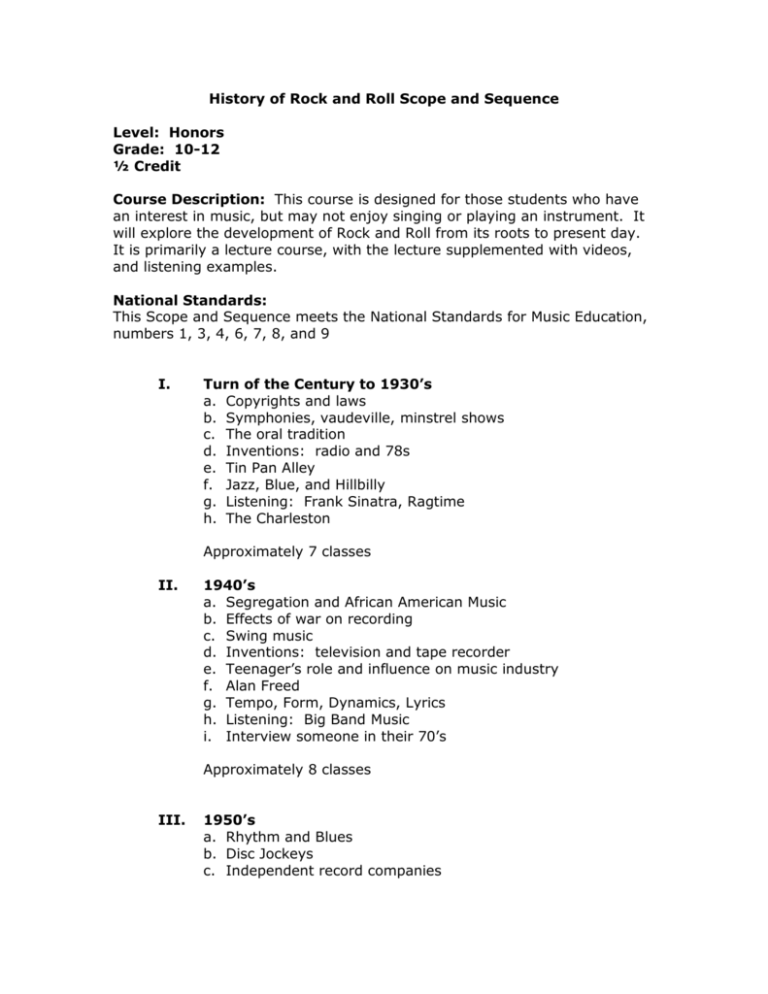
History of Rock and Roll Scope and Sequence Level: Honors Grade: 10-12 ½ Credit Course Description: This course is designed for those students who have an interest in music, but may not enjoy singing or playing an instrument. It will explore the development of Rock and Roll from its roots to present day. It is primarily a lecture course, with the lecture supplemented with videos, and listening examples. National Standards: This Scope and Sequence meets the National Standards for Music Education, numbers 1, 3, 4, 6, 7, 8, and 9 I. Turn of the Century to 1930’s a. Copyrights and laws b. Symphonies, vaudeville, minstrel shows c. The oral tradition d. Inventions: radio and 78s e. Tin Pan Alley f. Jazz, Blue, and Hillbilly g. Listening: Frank Sinatra, Ragtime h. The Charleston Approximately 7 classes II. 1940’s a. Segregation and African American Music b. Effects of war on recording c. Swing music d. Inventions: television and tape recorder e. Teenager’s role and influence on music industry f. Alan Freed g. Tempo, Form, Dynamics, Lyrics h. Listening: Big Band Music i. Interview someone in their 70’s Approximately 8 classes III. 1950’s a. Rhythm and Blues b. Disc Jockeys c. Independent record companies d. Elvis, Little Richard, Buddy Holly, Jerry Lee Lewis, Richie Valens e. Pretty Boy Rock f. American Bandstand g. Payola h. Chuck Berry i. Listening: Buddy Holly, Everly Brothers, Elvis, Chuck Berry j. Interview someone in their 60’s k. The Stroll Approximately 14 classes IV. 1960’s a. Elvis b. Diversification of music: folk, rock, Motown, surf, etc. c. Song writing teams d. Dance crazes e. Beatles, Rolling Stones, Bob Dylan f. Monterey Pop Festival, Woodstock, and Altamont g. Jimi Hendrix, The Doors, Janis Joplin h. Interview someone in their 50’s i. Twist While this is course is a historical look at the development of Rock and Roll chronologically, students will also explore connections of past styles to current music, analyze lyrics of both past and present music, and explore career opportunities in the music industry. All notes given will use the guided note, skeletal note and key word formats. Assessments: Written assessments will be given throughout the semester. Written assessments use multiple choice, matching, true and false and application type questions on unit tests, and use short answer for aural testing of listening examples. Several group performance assessments are given throughout the semester. One original dance assessment is given to small groups. One Rock Video assessment is given to large groups. Goals and Outcomes: The student will be able to identify and apply historical content given per era The student will be able to listen and identify musical concepts in rock music The student will be able to help produce a Rock Video The student will be able to demonstrate various dance crazes of various eras The student will be able to apply historical content to current music trends The student will analyze lyrics for content Revised August 2015


